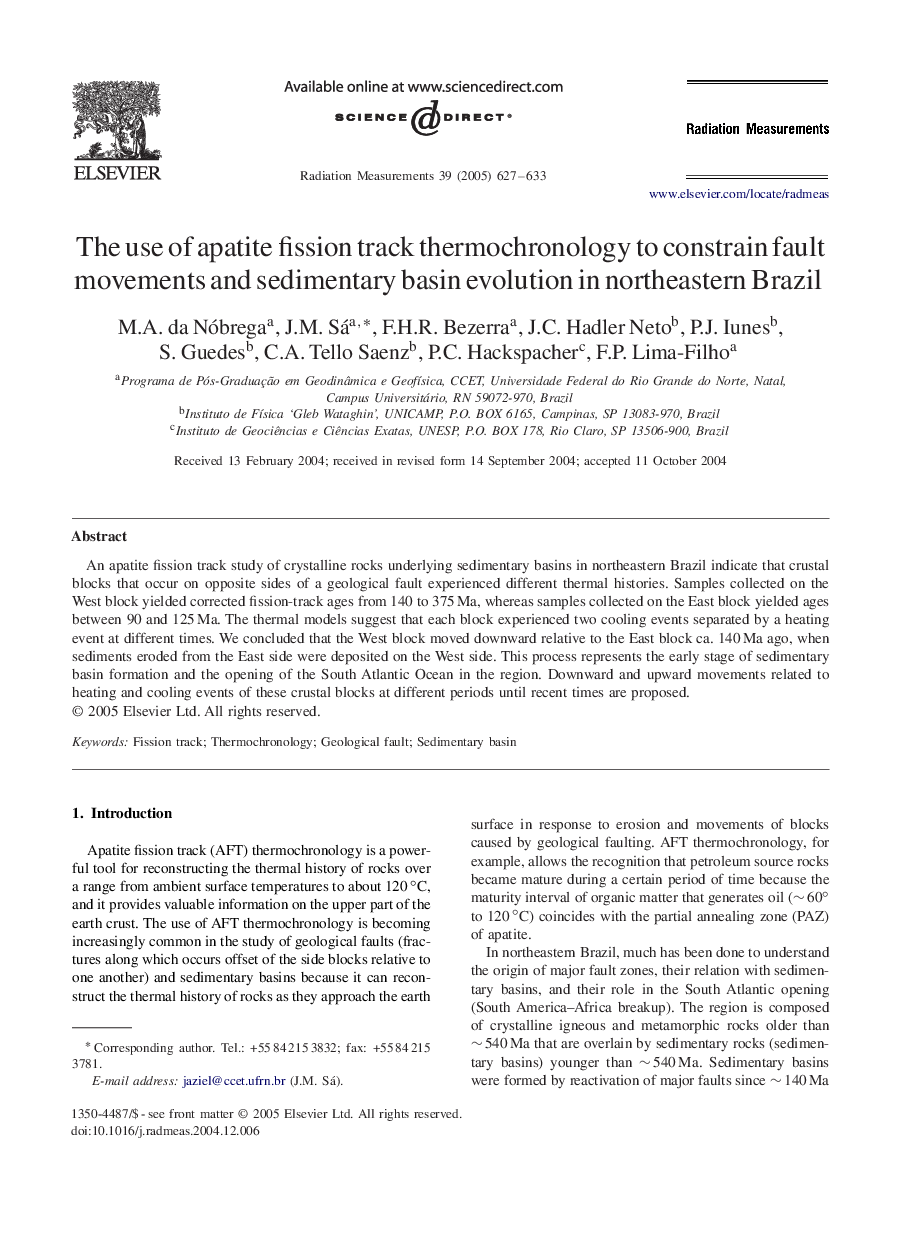| Article ID | Journal | Published Year | Pages | File Type |
|---|---|---|---|---|
| 10731982 | Radiation Measurements | 2005 | 7 Pages |
Abstract
An apatite fission track study of crystalline rocks underlying sedimentary basins in northeastern Brazil indicate that crustal blocks that occur on opposite sides of a geological fault experienced different thermal histories. Samples collected on the West block yielded corrected fission-track ages from 140 to 375Â Ma, whereas samples collected on the East block yielded ages between 90 and 125Â Ma. The thermal models suggest that each block experienced two cooling events separated by a heating event at different times. We concluded that the West block moved downward relative to the East block ca. 140Â Ma ago, when sediments eroded from the East side were deposited on the West side. This process represents the early stage of sedimentary basin formation and the opening of the South Atlantic Ocean in the region. Downward and upward movements related to heating and cooling events of these crustal blocks at different periods until recent times are proposed.
Related Topics
Physical Sciences and Engineering
Physics and Astronomy
Radiation
Authors
M.A. da Nóbrega, J.M. Sá, F.H.R. Bezerra, J.C. Hadler Neto, P.J. Iunes, S. Guedes, C.A. Tello Saenz, P.C. Hackspacher, F.P. Lima-Filho,
